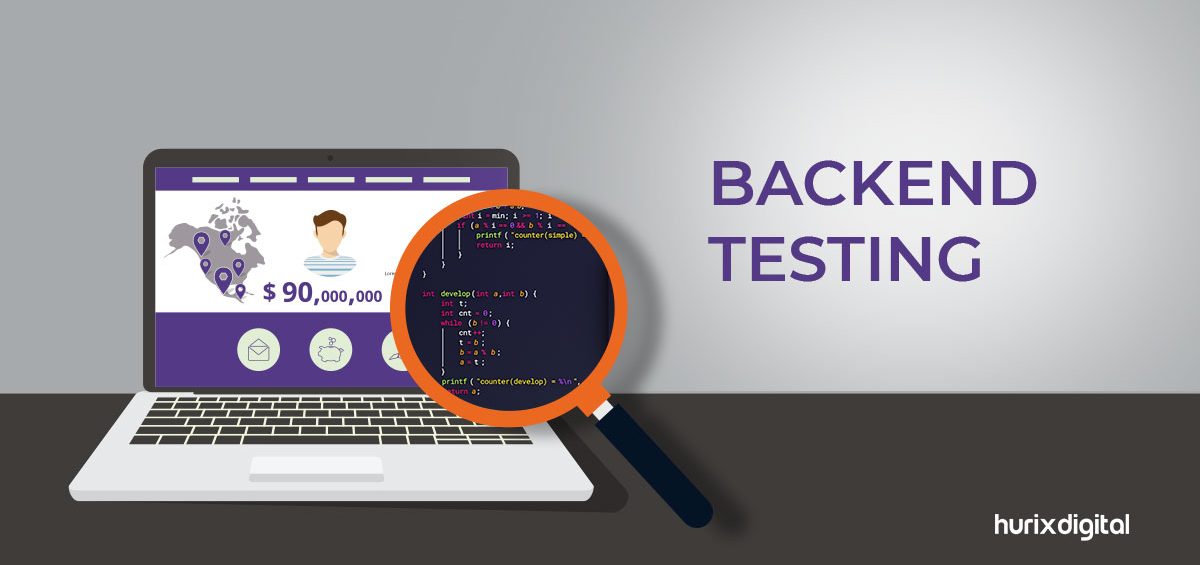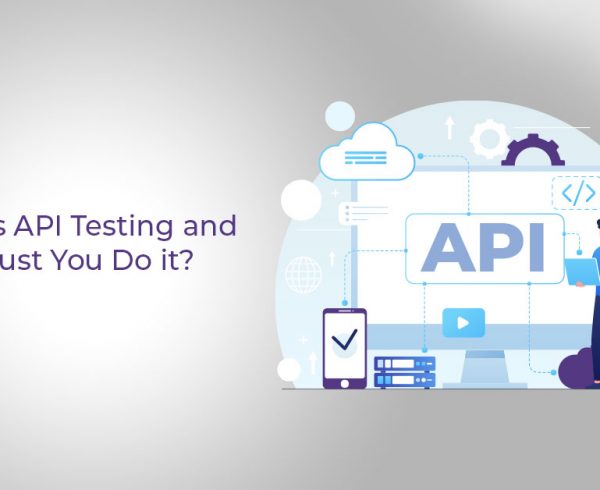The testing process that checks the server or database of an application or software is called Backend Testing. It tests the application or database layers to ensure that the web application or software does not have defects like deadlock, data loss, or data corruption.
Backend testing is also called Database Testing. The data entered in the front end of an application will be stored in the backend database. The database may be Structured Query Language (SQL) Server, MySQL, Sybase, Oracle, DB2, etc. The data is organized in the tables as records and used to support the page’s content. There are also databases such as MongoDB, where data are stored as documents.
Databases are checked for ACID (Atomicity, Consistency, Isolation, and Durability) properties, CRUD operations, their Schema, Business rule conformity, and tested for Security and Performance.
In backend testing, the predominant focus is to study the system’s behavior at the database level. When is not done properly, it may lead to severe complications like deadlock, data corruption, data loss, etc.
Table of Contents:
- How is Backend Testing done?
- Types of database testing
- Tools used for database testing
- Critical differences between Front-end testing and Backend testing
- Conclusion
How is Backend Testing done?
Regardless of the database organization, all database/backend testing includes the validation of the following:
- Functions testing
- Sequences testing
- Schema
- Database tables
- Columns
- Keys and Indexes
- Performance check
- Stored procedures
- Triggers
- Database server validations
- Validating data duplication
In backend testing, it is not necessary to use the GUI; it is possible to directly pass on the request through any browser with the necessary parameters for the function and get a response in a default format: for example, XML or JSON. It is also essential to connect to the database directly and verify the data using SQL queries. Debugging can be done through log files.
There are various phases in backend testing. The first step is to acquire the design specification for a database server. The next step is to test the specification design, followed by implementing tests in this design with SQL code.
Types of database testing
The types of database testing include:
- Structural Testing
- Functional Testing
- Non-Functional Testing
- Structural Testing: This focuses primarily on validating the proposed database structure for an application in terms of triggers, tables, views, functions, stored procedures, etc.
- Functional or Behavioural Testing: It is to do with the application’s behavior from the back end point of view. For example, if a user fills up a form at the front end, which tables and associated columns will be impacted is the concern of functional testing.
- Non-Functional Testing: How well the application database performs under different load and stress conditions would be the concern of this testing.
Also Read: What is API Testing and Why Must You Do it?
Tools used for database testing
Some of the tools used for database testing are:
- Data Factory
- Data Generator
- Test Data Generator
- AETG
- TurboData
Advantages of backend testing
- It is much more advanced than black-box testing: in this testing, the focus is on data and its organization level in the database.
- Its in-depth testing ensures maximum test coverage in scope.
- It can help uncover any defects in the early development/testing phase.
Disadvantages of backend testing:
- A manual tester must know SQL to interact and work with components such as views, tables, triggers, stored procedures, functions, etc.
- It is likely to incur an additional testing cost to the business organization.
Here are the critical differences between Front-end testing and Backend testing
| Front-end Testing | Backend Testing |
| It is also known as GUI testing, and it primarily has to do with the look and feel of the application’s UI (user interface). It is also known by the terms front-end testing or Application testing. Front-end Testing tests the presentation layer of a 3-Tier Architecture. | In backend testing or Database testing, the emphasis is on data validation and integrity testing. It tests the application and database layers of a 3-Tier Architecture. |
| In terms of procedure, GUI testers focus on the functionalities of an application and the associated forms, menus, graphs, and reports, which are typically developed in programming languages such as JAVA/J2EE, PHP, VB.net, C#, Delphi, etc. | Procedurally speaking, database testers primarily focus on testing backend components that are not visible to the application users. Various database components present in a database, such as Oracle, DB2, My SQL, SQL Server, Sybase, etc., are tested. |
In terms of validation, GUI testing involves the validation of
|
In terms of validation, it involves the validation of:
|
| Front-end testing is required to test the functionality of the application in toto. | It is required to watch out for deadlock, data corruption, data loss, etc. |
| GUI or front-end testers require a sound knowledge of business requirements, application behavior, reading application logs, etc. | A backend tester requires a sound knowledge of database concepts such as normalization and SQL queries to interact with views, procedures and functions, tables, indexes, keys, etc. |
| Examples of front-end testing include Acceptance testing, unit tests, Regression Testing, Accessibility testing, etc. | Examples of backend testing include API testing, SQL testing, etc. |
| For front-end or GUI testing, the data under test is entered manually into the application. And based on this test data, functional testing for the application is performed. | In terms of the data sources for testing, database testing captures heterogeneous data from various sources such as data over intranet applications, web applications, user interactions, etc. |
| Front-end testing is always performed on the user interface (GUI). | Backend testing is concerned with the testing of databases and business logic. |
Also Read: How to Perform API Testing on Software Apps?
Conclusion
To conclude, backend testing is a massive asset to an organization given its in-depth testing approach, which ensures the maximum scope of test coverage. There is also value addition to a business enterprise in terms of software quality. It safeguards the business against database defects like data loss and data corruption.
At Hurix, our team of experienced engineers and experts is capable of helping you with backend testing by applying advanced automation testing methods and open-source Al-powered tools. We provide custom solutions for backend testing that precisely fit your projects’ requirements on understanding your particular needs.
To know more about Backend Testing solutions from HurixDigital, please write to us at marketing@hurix.com.











